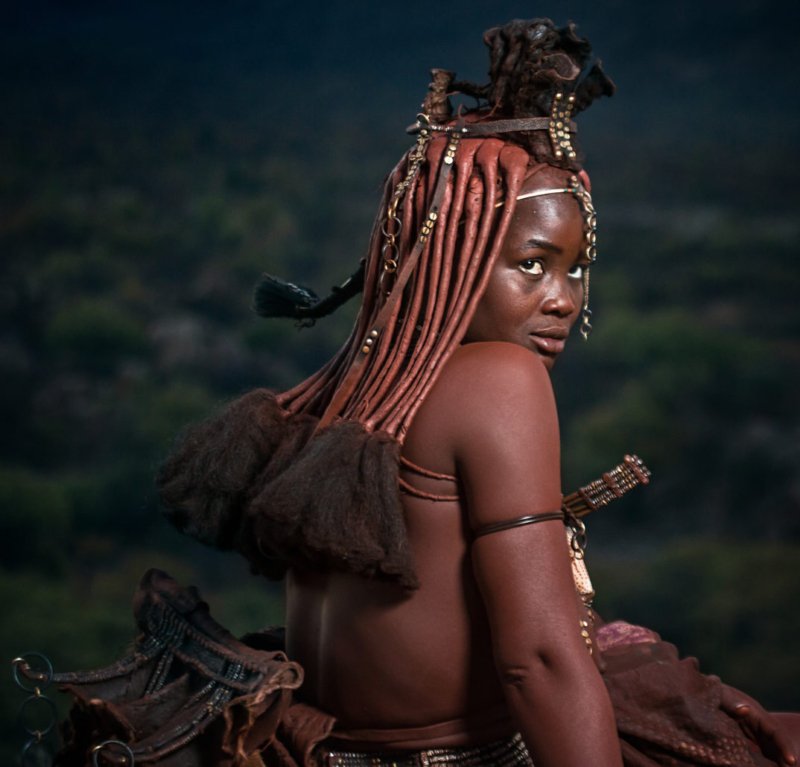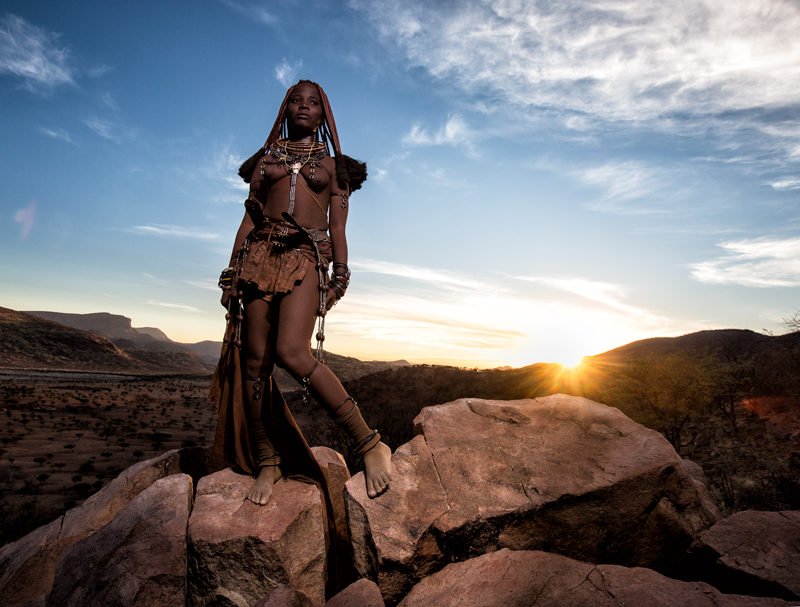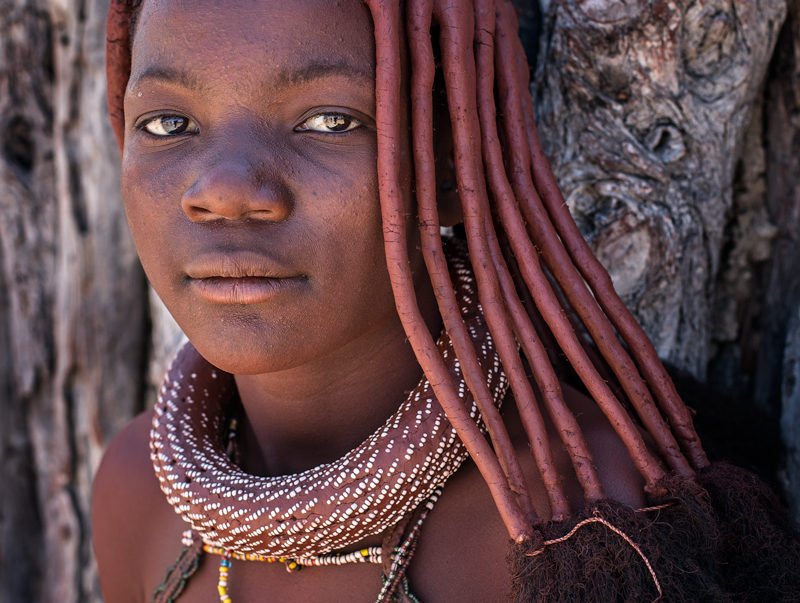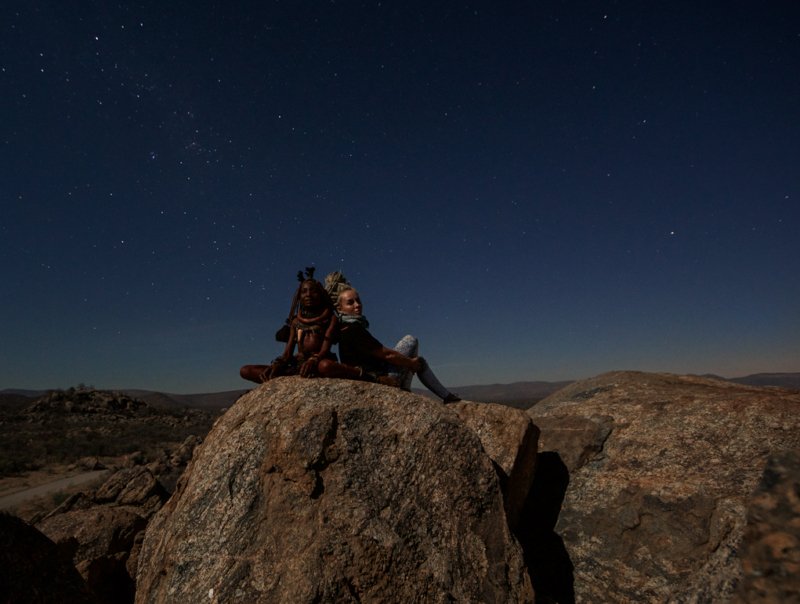Himba | Culture, Life, and Otjize
The Himba tribe is indigenous to the Kunene Region (formerly Kaokoland) in northern Namibia and southern Angola. The Himba tribe is perhaps best known for coloring their hair and bodies with a red color paste (otjize), which is considered a sign of beauty. The otjize mixture is beautiful, scented with aromatic resins, deep in orange, symbolizing the earth’s red color and blood—the essence of life.
Around the 16th century, the Himba people crossed to Namibia from Angola, settling in Kaokoland (Kunene) as part of the Herero tribe. Impoverished by disease and Nama cattle raiders, the Himba were left without livestock and forced to rely on the land for survival. Driven by hunger, many Himba fled to Angola, where they were called Ova-Himba, meaning ‘beggars’ in the Otjiherero language.
Proud and exquisite, Himba women are said to be one of the most beautiful in the world. Fiercely proud of their traditional hairstyles and clothes, they spend several hours each morning on their beauty care and sleep on the wooden pillows to not ruin their hairstyle. Both men and women take great care in wearing their traditional attire, clothes, hairstyle, and jewelry, which are all of particular significance to the Himba and are part of their tradition and culture.
Himba homes are simple huts made from earth and cattle dung. They contain little beyond a bed and a collection of useful implements such as kitchen tools. Women and men wear their traditional dress, loincloths, and sandals for a man, often with foot soles made from old car tires; women dress in goat-skinned skirts and jewelry. From the time a Himba girl is born, her hairstyle will identify her place in society, indicating the age, clan, and marital status of a woman.
A young girl typically has two plaits of braided hair (ozondato), the form of which is decided by the clan she descended on her father’s side. A young girl who hasn’t reached puberty will display two braids at the front of her head. If a girl is a twin, she will wear only one braid, indicating she is only one-half of a pair of twins.
At puberty, the girl will wear braids up front, covering her face, letting males know she isn’t ready to marry. When a young woman is ready to marry, the same locks will be braided toward the back of the head, allowing potential suitors to see her face. First, the hair is lengthened with a straw woven together with the hair extensions to create dreadlocks, which are subsequently covered in otjize and finished with goat hair, added to give the distinct pom-pom look. When a woman has been married for a year or has had a child, she will wear the erembe headdress on top of her head.








